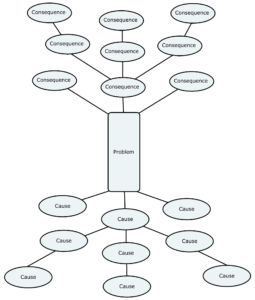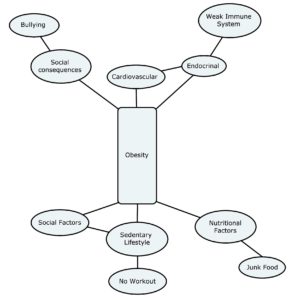When you face a problem in your life, spend most of the time thinking about the causes and the consequences of the problem. The better you analyze your problem, and the better you understand it, the easier and faster you will find the solution.
Besides, every time in life you are dealing with a difficult situation, rejoice. Call your friends and have a party. Celebrate. It is a great moment for learning, innovation, and change. This principle is one pillar of the Continuous Quality Improvement (CQI) approach.
We consider a problem not as a problem per se but as an opportunity to grow, to mature, and become a better person. Each problem is the entry point to a spiritual experience. God can use your difficulties to transform your life for the better.
In addition, consider the issue from different perspectives, different angles. Take into consideration the broader context where the problem arises. Deconstruct it into smaller piece, its components. Explore it up, down, left, and right. Make links with other related problems.
It is now the time to analyze your problem. Sometimes people feel that they do not know where to begin and how to cope with the issue in a systematic way. The difficulty overwhelms them. This section introduces you to life problems analysis using an evidence-based approach to discover or generate hypotheses about the causes of your life problem.
You have many tools to diagnose your problems, and we will explain you the life problem’s causal tree.
The causal tree is a means of helping you to brainstorm the causes and the consequences of your life’s problems. The roots of the tree are the causes, the branches are the consequences, and the trunk or main stem is the problem. The beauty of this tool is that you could make links or analyze relations among the causes or the consequences. That gives you a better diagnostic of the problematic situation as you develop a better understanding of how the causes or the consequences are related to each other. Moreover, for each cause and consequence, you can analyze sub-causes and sub-consequences. You end up having a tree with different branches and sub-branches.

THE LIFE PROBLEMS’ CAUSAL TREE
Let us illustrate this tool by using an example. Imagine you have a close friend, living in the same place as you. That person is obese. Now your friend contacts you and asks you to help him or her to identify the causes and the consequences of his/her obesity. What could they be? One possible cause of the problem may be that the person has a sedentary lifestyle and does not exercise. Other reasons may also be related to nutritional factors (see Figure 2.2 for illustration). Further, what are the consequences?

EXAMPLE OF A LIFE’S CAUSAL TREE
One of the consequences for the person who is overweight may be the fact this could have an adverse impact or effect on his/her cardiovascular system, the heart, and the blood vessels. Moreover, it could affect the metabolic and endocrinal systems. Think for a while about other possible causes and consequences. In this example, also think about how the causes are connected to each other. How are the consequences associated with each other?
Dr. Joseph Adrien Emmanuel Demes, MD, MPH, Ph.D. (c),
Medical Doctor, Professor, Researcher, and Spiritual Leader,
The author of the book “How to Improve the Quality of Your Life? A Comprehensive Approach and Guide to Well-Being.”
Get Access to our book on Amazon: www.amazon.com
Check our blogs: www.qualityoflife-doctordemes.com